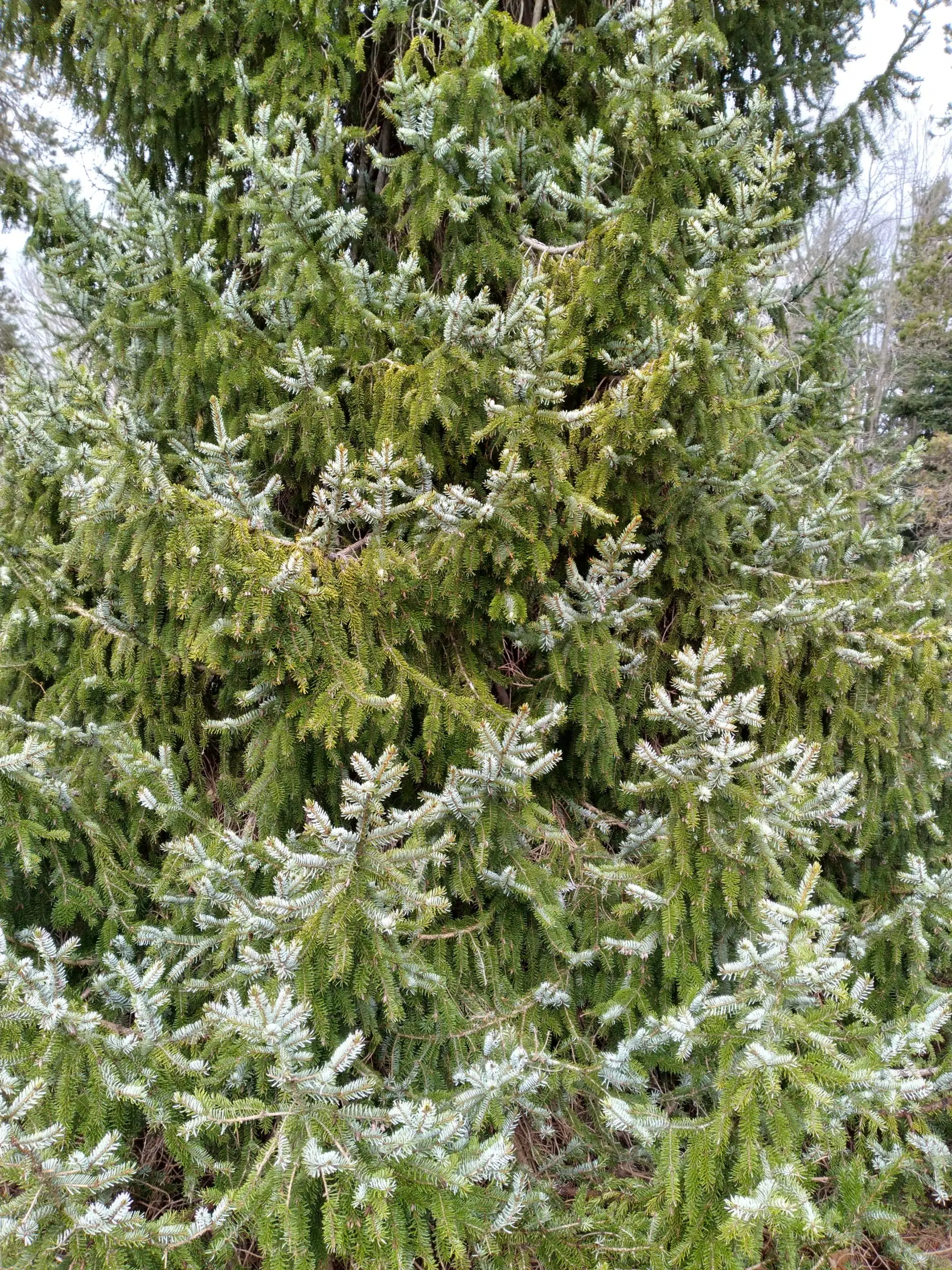Trees
Serbian Spruce
Picea omorika

The Serbian spruce is an elegant tree for northeast Ohio landscapes. Mature specimens are tall and slender, with gracefully drooping secondary branches and ascending primary branches that become bowed with age. In the mountains of Serbia, Bosnia, and Herzegovina only about 50 small relict stands comprising less than 150 acres of this distinctive conifer remain in the limestone mountains of the upper Drina River valley. Only one other spruce is native to Europe, the majestic and more cosmopolitan Norway (Picea abies).
In our endeavor to create beautiful and useful gardens, conifers may be used to give structure and a backdrop for more showy flowering plants. Spruces are excellent nesting and roosting places for birds. Serbian spruce has fragrant pitch that perfumes the garden. In contrast with most other spruces, Serbian has flattened needles displaying white bands on their undersides, giving the trees a two-toned appearance. Needles are supple and not prickly although young plants have somewhat sharper tips than older trees do. In the landscape, Serbian spruce is most useful as a specimen, in groupings, and as a screen.
Cultural requirements include full sun and a reasonably well-drained and relatively moist soil. Serbian spruce thrives in both acid and alkaline soil, a characteristic it shares with one other prominent spruce in northeast Ohio landscapes, the Colorado spruce.
This spruce is relatively free of insect and disease problems. However, white pine weevil has killed the leader of many of Holden’s specimens which, although unsightly for a while, has resulted in many trees that are thicker and broader than average.
At Holden’s Conifer Collection our largest Serbian spruce, received as seed in 1958 and planted in 1967, is 52 feet in height, with a 16 foot spread. At Cleveland Botanical Garden’s Topiary Garden our tallest weeping Serbian spruce (Picea omorika ‘Pendula Bruns’) measures 28’ x 6’.
Seedlings start producing cones at about 15 years. The cones are 1 ¾ inches to 2 ¾ inches in length and a dark purple until they mature in fall to a cinnamon brown. In early to mid May the ½ inch bright red male strobili mature yellow when they shed their pollen.
There is a 42’ x 10’ Serbian spruce planted in 1979 in the first Display Garden bed encountered as you walk along the work road adjacent to the Hedge Collection There is also a prominent grove of Serbian spruce above Sperry Road in the Conifer Collection overlooking Bicknell Field and Chardon Township to the east.
Serbian spruce is hardy from USDA Zones 4 through 7.
Ethan Johnson
Plant Records Curator
Form: Pyramidal
Growth Rate: Slow
Light: Full Sun
Site Selection: Open Spaces (Parks/ Lawns)
Size: Large
Tolerances: Air Pollution, Drought
Value: Evergreen, Winter Interest




